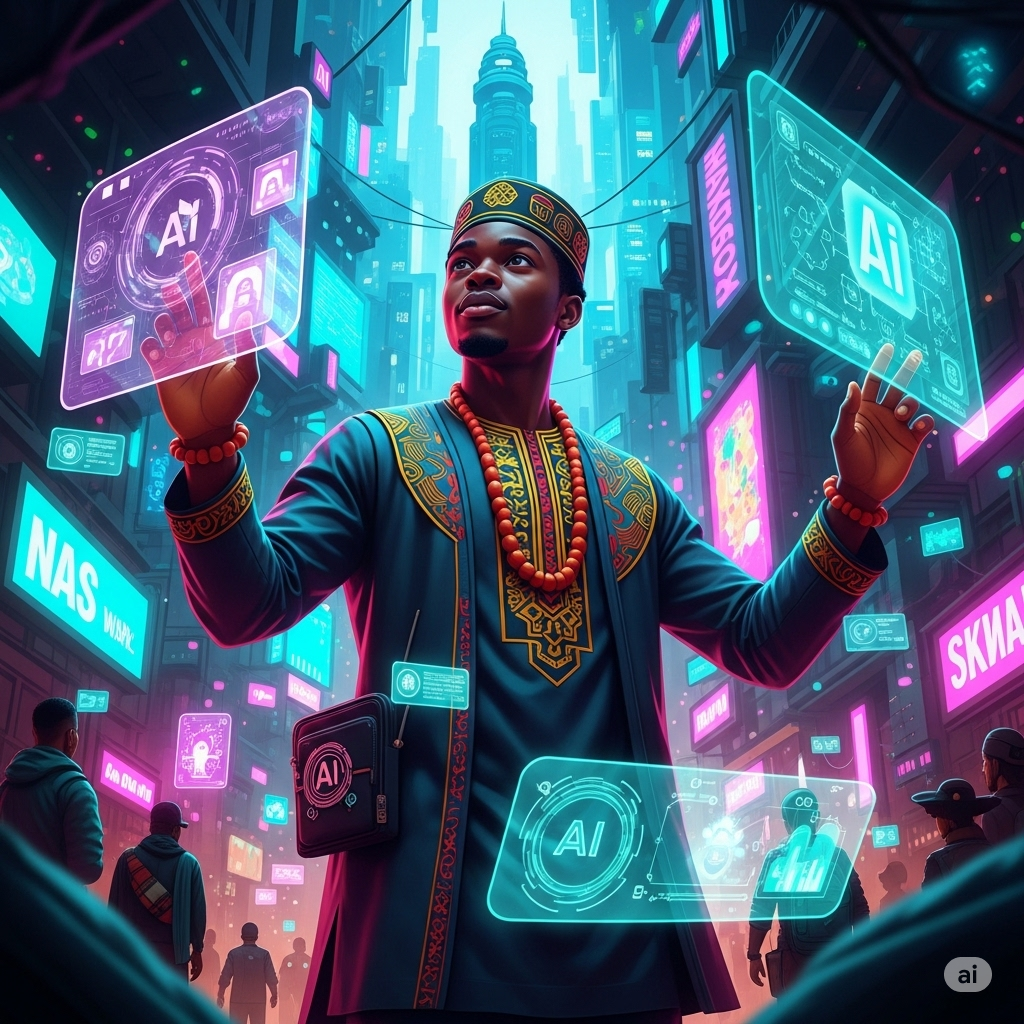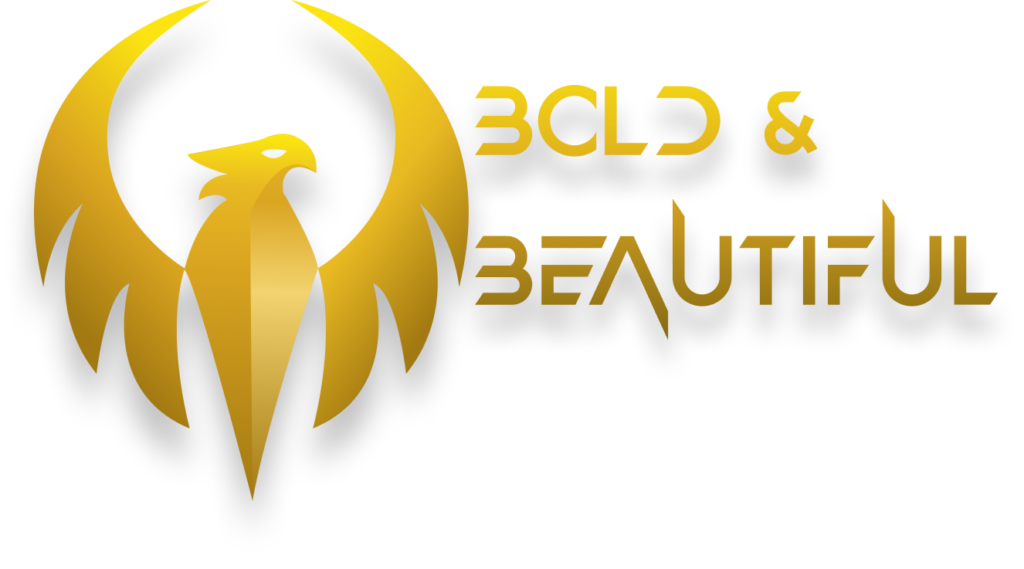Keywords: Nigerian Tech Youth, AI Revolution Africa, Artificial Intelligence Nigeria, Tech Opportunities for Youth, African AI Startups, Future of Work Nigeria, Digital Skills Africa, AI Education Nigeria.
Remember those classic sci-fi movies? The Jetsons, Back to the Future, The Terminator… they painted pictures of a future that always felt so, so far away. For years, we’d watch these incredible inventions and think, “Abeg, when will Nigeria even catch up to this kind of thing?” But then something shifted. It wasn’t just a gradual change; it was like a Lagos bus suddenly hitting full speed on an open expressway – exponential growth!
Specifically, in the world of Artificial Intelligence, the script totally flipped. What used to be a 2-3 year prediction now lands on our laps in 2-3 months. We went from those old-school punch cards to mind-blowing video generation. From the days of “Please hold, operator will connect you” to AI avatars conducting interviews. It’s like magic, but it’s actually pure Naija-style innovation meeting global advancement.
But what was that gbam moment? That point where things truly went from crawl to full-on sprint, leaving even the most imaginative Nollywood directors scratching their heads? Let’s take a wild ride through AI history and see how we got here, and what it means for young, ambitious Nigerians like you.
The Slow Burn: If This, Then That (1950s – 1980s) 🔥
Imagine AI as a baby. In its early days, from the 1950s to the 1970s, it was all about “Rule-Based AI.” Think of it like a very strict parent: “If you do this, then this will happen.” No room for error!
- 1950: The Turing Test. Alan Turing, a real OG, proposed the idea that one day, AI might be so smart, we’d need a test to tell it apart from humans. Imagine that! Even back then, people were dreaming big.
- 1956: The Dartmouth Summer Research Project. This was like the first major tech hackathon for AI. John McCarthy, tired of saying “automated reasoning,” coined the term “Artificial Intelligence” right there. The name stuck!
- 1957: The Perceptron. Frank Rosenblatt gave us the Perceptron, an early form of neural network. It was basically teaching a machine to learn from weighted inputs. Think of it like giving more “chai” to certain facts to make the machine understand better.
- 1966: Eliza, the AI Therapist. Joseph Weizenbaum from MIT created Eliza, the world’s first AI chatbot. It mimicked a psychologist, always asking “Why?” It was a bit like your auntie who wants to know all the details: “Why are you feeling okay?” “Why didn’t you sleep well?” Sounds familiar, right?
But then, just as things were getting interesting, we hit our first “AI Winter” (1970s-mid 1980s). Funding dried up, and computers weren’t powerful enough. It was a proper setback, like when NEPA takes light just as you’re about to score in FIFA.
The Learning Curve: Data is the New Crude Oil (Mid-1980s – Early 2000s) 🛢️🧠
Just like how Nigerians always find a way to thrive, AI found its way back. The mid-80s brought the “Machine Learning Era,” where AI started learning from patterns in data, rather than just rigid rules. This was a game-changer!
- 1986: Backpropagation Algorithm. Jeffrey Hinton and his team gave us a way for neural networks to learn from their own mistakes! Imagine teaching a child, and they not only understand but also figure out why they were wrong and self-correct. That’s backpropagation. This was huge for training AI to be smarter, faster.
- 1989: LeNet. Yan LeCun developed LeNet, a revolutionary convolutional neural network (CNN). This was the birth of AI that could “see” and “understand” images. Every image recognition app on your phone today owes a debt to LeNet.
- 1997: Deep Blue Beats Kasparov. IBM’s Deep Blue, though still rule-based, defeated the reigning world chess champion, Garry Kasparov. The world watched, astonished! It was a powerful statement that AI was no longer just a lab experiment.
- 1999: Nvidia GeForce 256. Not directly AI, but this first modern GPU was a silent hero. CPUs are good for complex, single tasks, but GPUs? They’re like that omo-ita who can juggle 10 different tasks at once, slightly simpler, but simultaneously. This parallel processing became absolutely critical for AI’s future.
Another “AI Winter” followed, but this time, the seeds for explosive growth were already planted, waiting for the right conditions to sprout.
The Explosion: Deep Learning and Beyond! (2000s – Today) 🚀💥
Fast forward to the 2000s, and things truly began to “chook eye”. This is the “Deep Learning Era,” driven by multiple layers of neural networks and the incredible power of GPUs.
- 2006: Deep Belief Networks. Jeffrey Hinton (he’s back!) enabled AI to learn from massive amounts of unlabeled data, without needing humans to painstakingly label everything. This freed AI to learn on its own terms, like a smart student studying for WAEC without needing constant supervision.
- 2007: NVIDIA CUDA. This was the real ignition point! CUDA allowed developers to use GPUs for general-purpose computing, not just making games look pretty. This unleashed the processing power that AI desperately needed.
- 2011: IBM Watson Wins Jeopardy! & Apple Launches Siri. AI entered popular culture again as Watson beat humans on a popular quiz show, and Apple gave us Siri – our first personal AI assistant. Suddenly, AI wasn’t just in labs; it was in our pockets.
- 2012-2016: Google Brain, DeepMind, GANs, TPUs, AlphaGo! This period was a blur of breakthroughs: Google Brain learned from YouTube videos, DeepMind’s DQN mastered Atari games, GANs started generating realistic images (hello, deepfakes!), Google deployed TPUs (GPUs specifically for AI!), and AlphaGo conquered the ancient game of Go, a feat once thought impossible for AI.
- 2017: Transformer Architecture. The “Attention is All You Need” paper introduced the Transformer architecture, the backbone of almost all modern AI models, including the ones we’re all raving about now. This was a blueprint for building incredibly powerful language models.
- 2018-2023: The GPT Ascent & Beyond. OpenAI dropped GPT-1, then GPT-2 (which caused public concern with its capabilities), then the truly impressive GPT-3, which made everyone sit up and pay attention to natural language processing. DeepMind’s AlphaFold 2 solved the protein folding problem, accelerating drug discovery! Then came Dolly 1, Midjourney, Stable Diffusion – AI generating stunning images from text.
- November 2022: ChatGPT! This was the gbas gbos moment! ChatGPT exploded onto the scene, becoming one of the fastest-growing products in history. It put AI squarely in the public’s consciousness, showing everyone what was truly possible.
- 2023-2025: GPT-4, Llama, Gemini, Sora, Blackwell GPUs. The pace accelerated further. OpenAI released GPT-4. Meta’s Llama opened the floodgates for open-source AI models, meaning more developers could get their hands on powerful tools. Google launched Gemini. OpenAI gave us Sora, demonstrating incredibly realistic video generation. Nvidia’s Blackwell GPUs are pushing the boundaries of training speed.
The Nigerian Twist: What Does This Mean for Us? 🇳🇬✨
See how quickly things have moved? It’s like a Nigerian wedding train – once it starts moving, there’s no stopping it! For young Nigerians in the tech space, this isn’t just a history lesson; it’s a massive opportunity.
- Skill Up, Naija Style: The demand for AI skills is exploding. Whether it’s data science, machine learning engineering, AI ethics, or even prompt engineering, there’s a place for you. Platforms like Google Digital Skills for Africa, Coursera, and local bootcamps are your allies. Don’t wait for “perfect” conditions; start with what you have, just like true hustlers.
- Solve Local Problems with Global Tools: We have unique challenges in Nigeria – from agriculture and healthcare to finance and education. Imagine an AI model trained on Nigerian dialects for better voice assistants, or AI-powered solutions to optimize farming in rural communities. The tools are here; your creativity is the limit! Think like Ubenwa in Kenya, using AI to detect infant health issues from cries, or Awarri in Nigeria building AI-driven robots for agriculture. These are African solutions for African problems.
- No More “Sophisticated Unemployment”: Some worry about AI taking jobs, leading to “sophisticated unemployment” as some experts put it. But this isn’t a dead end; it’s a redirection! Instead of being mere consumers of foreign AI, we need to be creators and innovators. This means prioritizing critical thinking, not just rote learning. It means empowering our creative industries to see AI as a co-pilot, not competition.
- Community and Collaboration: The global AI community is highly collaborative. Join online forums, attend virtual (and physical) meetups, and connect with other young developers. Platforms like Youth in AI are specifically dedicated to empowering African youth in this space. Your network is your net worth, especially in tech!
- Embrace Exponential Growth: It’s practically impossible for humans to truly grasp exponential growth. We tend to think linearly. But AI doesn’t. And that’s the twist: AI is now helping us advance AI. Humans are no longer the bottleneck! This means the pace will likely accelerate even further.
The “AI Winter” Myth for Nigeria?
While previous AI winters were about funding cuts and skepticism, the current landscape is different. Every major company, institution, and government is leaning into AI. The widespread adoption makes another prolonged AI winter unlikely. And even if one comes, with AI now assisting in its own advancement, it might just come and go before we even notice, like a quick power flicker before the generator kicks in!
As John McCarthy famously said, “As soon as it works, no one calls it AI anymore.” Think about it: Siri, Alexa, Google Home – they were once revolutionary AI, now they’re just part of our everyday lives. What’s considered “AI” today will be commonplace tomorrow.
The future is here, and it’s calling on the ingenuity and resilience of Nigerian youth. Are you ready to not just adapt, but to lead this AI revolution? The opportunity is not just knocking; it’s practically banging down your door like a bill collector on a Monday morning! So, pick up your tools, hone your skills, and let’s build the future, one intelligent solution at a time. The world is watching, and Nigeria is ready to show them what’s possible.
https://youtu.be/zExHlzp6p-4?si=NP6PlwXCNnjfXGsS
Stay tuned to CreativeTechAfrica.blog for more insights and opportunities in the African tech landscape! Don’t forget to share your thoughts in the comments below – what AI innovation excites you the most?



